The gap and island solution actually turns out to be a very short piece of code - most of it is output. I'm using the quicksort posted by Nigel Heffernan
Option Base 1
Option Explicit
Sub GapAndIsland()
Dim varData As Variant
Dim minStart As Variant
Dim maxEnd As Variant
Dim i As Long
Dim gap As Variant
' Set the array
varData = Range("f2:g6").Value
' *** Modified code to remove bad data ***
' Remove elements that are not number or date
Call RemoveInvalid(varData, lastUsed)
' Sort https://stackoverflow.com/questions/4873182/sorting-a-multidimensionnal-array-in-vba
Call QuickSortArray(varData, 1, lastUsed, 1)
' *** end of modified code ***
' Initialise
minStart = varData(1, 1)
maxEnd = varData(1, 1)
gap = 0
' Loop over rows
' *** This line also modified ***
For i = 1 To lastUsed
' If there is a gap, increment total gap length
If (varData(i, 1)) > maxEnd Then
gap = gap + varData(i, 1) - maxEnd
End If
' Update latest end time
If varData(i, 2) > maxEnd Then
maxEnd = varData(i, 2)
End If
Next i
' Output
Range("I1:j6").Clear
Range("I1:j1").Font.Bold = True
Range("I1:J1").HorizontalAlignment = xlCenter
Range("j2:j3").NumberFormat = "dd/mm/yyyy hh:mm:ss"
Range("j4:j6").NumberFormat = "[h]:mm:ss"
Range("I1").Value = "Measure"
Range("J1").Value = "Value"
Range("i2").Value = "Start"
Range("j2").Value = minStart
Range("i3").Value = "End"
Range("j3").Value = maxEnd
Range("i4").Value = "Duration"
Range("j4").Value = maxEnd - minStart
Range("i5").Value = "Gaps"
Range("j5").Value = gap
Range("i6").Value = "Net"
Range("j6").Value = maxEnd - minStart - gap
End Sub
This uses the same continuous test data as in the question, but formatted as date-times:

Here is a UDF version which just returns the net time on task.
Function TimeOnTask(R As Range) As Variant
Dim varData As Variant
Dim minStart As Variant
Dim maxEnd As Variant
Dim i As Long
Dim gap As Variant
' Set the array
varData = R.Value
' *** Modified code to remove bad data ***
' Remove elements that are not number or date
Call RemoveInvalid(varData, lastUsed)
' Sort https://stackoverflow.com/questions/4873182/sorting-a-multidimensionnal-array-in-vba
Call QuickSortArray(varData, 1, lastUsed, 1)
' *** end of modified code ***
' Initialise
minStart = varData(1, 1)
maxEnd = varData(1, 1)
gap = 0
' Loop over rows
' *** This line also modified ***
For i = 1 To lastUsed
' If there is a gap, increment total gap length
If (varData(i, 1)) > maxEnd Then
gap = gap + varData(i, 1) - maxEnd
End If
' Update latest end time
If varData(i, 2) > maxEnd Then
maxEnd = varData(i, 2)
End If
Next i
TimeOnTask = maxEnd - minStart - gap
End Function
** EDIT **
I have tried to make this more robust by adding a short routine to remove rows where the start time or stop time is not a number or date (please also see modified code above):
Sub RemoveInvalid(ByRef arr As Variant, ByRef lastUsed As Long)
Dim i As Long
Dim j As Long
j = 0
For i = 1 To UBound(arr, 1)
' Increment and copy row if valid
If (IsNumeric(arr(i, 1)) Or IsDate(arr(i, 1))) And Not (IsEmpty(arr(i, 1))) And _
(IsNumeric(arr(i, 2)) Or IsDate(arr(i, 2))) And Not (IsEmpty(arr(i, 2))) Then
j = j + 1
arr(j, 1) = arr(i, 1)
arr(j, 2) = arr(i, 2)
End If
Next i
lastUsed = j
End Sub
It's not necessary to redim the array because you can just specify the last used row in the call to the quicksort and in the gap and island loop.


